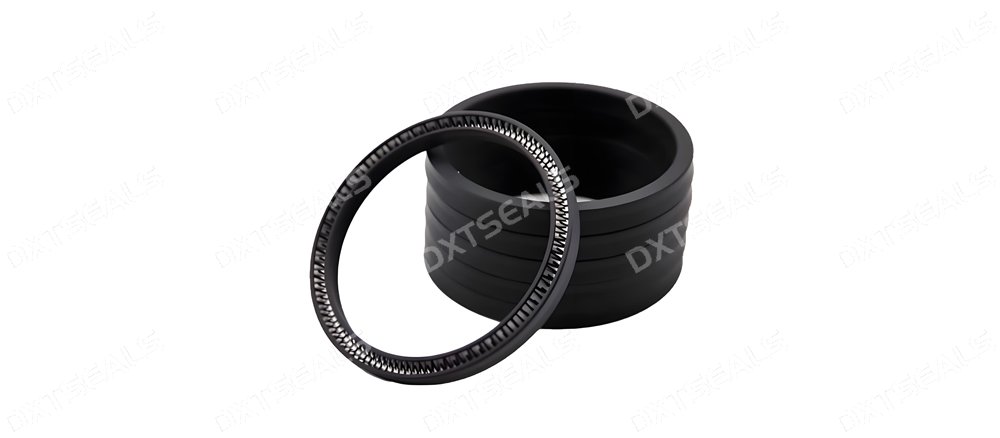
In high-performance industries where extreme temperatures, aggressive chemicals, or high pressures are common, spring-energized seals—also known as PTFE seals or Variseals—have become the go-to sealing solution. These seals are engineered to withstand critical environments while offering low friction, long service life, and exceptional sealing efficiency.
In this article, DXTSEALS breaks down the key structural features and sealing advantages of spring-energized seals, and why they are the optimal choice for many industrial applications.
🔍 What Is a Spring-Energized Seal?
A spring-energized seal is a composite sealing element typically consisting of:
-
A high-performance polymer jacket (usually PTFE, PEEK, or UHMWPE)
-
A metal spring energizer (such as stainless steel, Inconel, or Elgiloy)
The spring provides constant outward force, ensuring reliable sealing even under low pressure, while the jacket provides chemical resistance, thermal stability, and minimal wear.
🧩 Key Structural Features
1. U-Shaped Jacket Design
The most common design features a U-cup profile, which allows the seal lip to respond dynamically to system pressure and spring force, maintaining consistent contact with the sealing surface.
2. Spring Energizer Options
-
Canted coil springs: Ideal for ultra-low friction and dynamic sealing
-
Helical springs: Provide high load with robust resilience
-
V-springs or cantilever springs: Often used in vacuum and static applications
3. Material Flexibility
The jacket material is chosen based on the application:
-
PTFE: Excellent for chemical, thermal, and wear resistance
-
PEEK: Used for high-pressure, high-load environments
-
Filled polymers: Provide additional strength, wear resistance, or thermal stability
✅ Sealing Advantages of Spring-Energized Seals
1. Wide Operating Temperature Range
Suitable for temperatures from -250°C to +300°C, making them ideal for cryogenic and high-heat environments.
2. Chemical and Media Compatibility
PTFE and PEEK jackets offer exceptional resistance to nearly all fluids, gases, acids, and solvents.
3. Reliable Sealing Under Low and High Pressures
The spring compensates for pressure fluctuations, ensuring a tight seal even at low pressures, while also performing at pressures up to 300 MPa.
4. Low Friction and Minimal Wear
The self-lubricating properties of PTFE allow for smooth dynamic movement with minimal wear—ideal for high-cycle applications.
5. No Stick-Slip Behavior
Spring-energized seals reduce stick-slip issues, ensuring predictable and controlled motion in sensitive systems.
🔧 Applications Across Industries
Spring-energized seals are used in:
-
Aerospace: Fuel systems, landing gear, actuators
-
Oil & Gas: Downhole tools, valves, compressors
-
Pharmaceutical & Food: Clean environments, SIP/CIP systems
-
Cryogenics: LNG pumps, superconductors
-
Semiconductor & Vacuum: Plasma chambers, wafer handling
Their ability to maintain a seal in extreme conditions makes them indispensable in mission-critical operations.
🤝 Why Choose DXTSEALS for Spring-Energized Seals?
At DXTSEALS, we offer:
-
✅ Custom material and spring combinations for unique needs
-
✅ Precision CNC manufacturing for tight tolerances
-
✅ Rapid prototyping and scalable production
-
✅ Engineering support for seal design and optimization
-
✅ Global shipping and responsive service
Whether you need standard PTFE spring seals or fully customized geometries, we deliver quality you can rely on.
📌 Conclusion
Spring-energized seals are not just a sealing solution—they are an engineering advantage. Their unique structure and outstanding sealing performance make them a superior choice across a wide range of demanding applications.
Explore DXTSEALS' spring-energized seals today and discover how our solutions can enhance the reliability, performance, and longevity of your equipment.
🔗 Visit www.dxtseals.com for more details or to request a quote.
